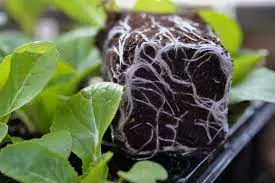It is a well known fact that the only way to beat a viral infection is to prevent it. Unlike fungal or bacterial infections, viral loads are virtually difficult to reduce once they infect the living cells. Three strategies are adopted to minimise the damage due to viral infections in plants.
The first approach involves control of vectors that are responsible for the spread of viruses. Research suggests that aphids are responsible for transmission of 275 viruses, white fly for 45 and thrips for ten different virus species. Hence controlling the vectors becomes necessary. It therefore becomes necessary to apply vector control measures at periodic intervals during the growth cycle of the crop.
The second approach involves strengthening the plant cell walls and increasing the callose levels in the plant cells, which would make it difficult for the vectors to pierce the plant tissues. Use of foliar spray of liquid Calcium in oxide formulation helps in strengthening the plant cells against vector attacks.
The third approach draws its parallel from the vaccination process. We recommend use of a patented formulation derived from Red Algae – AG Fort, which activates the Salicylic Acid and Jasmonic Acid pathways in the plant cell, while at the same time activating the NPR1 genes that are responsible for defending the plant from virus attacks. Use of AG Fort also improves the callose levels in the cells.
